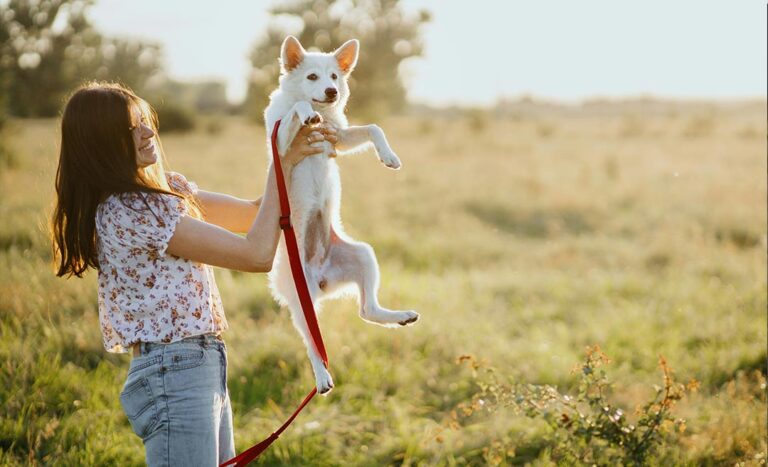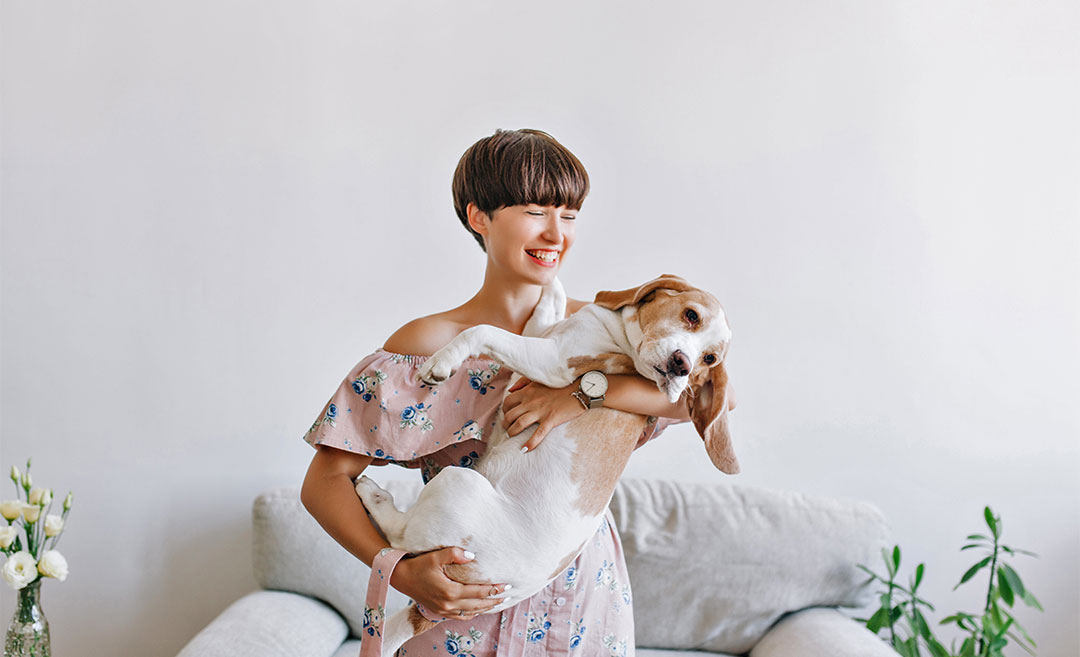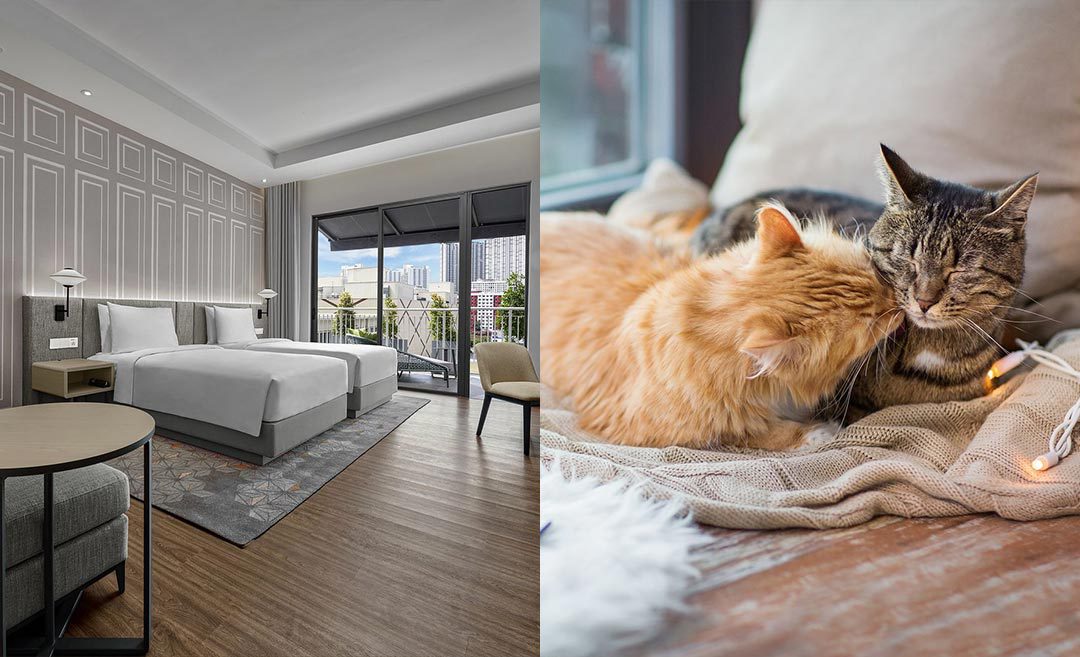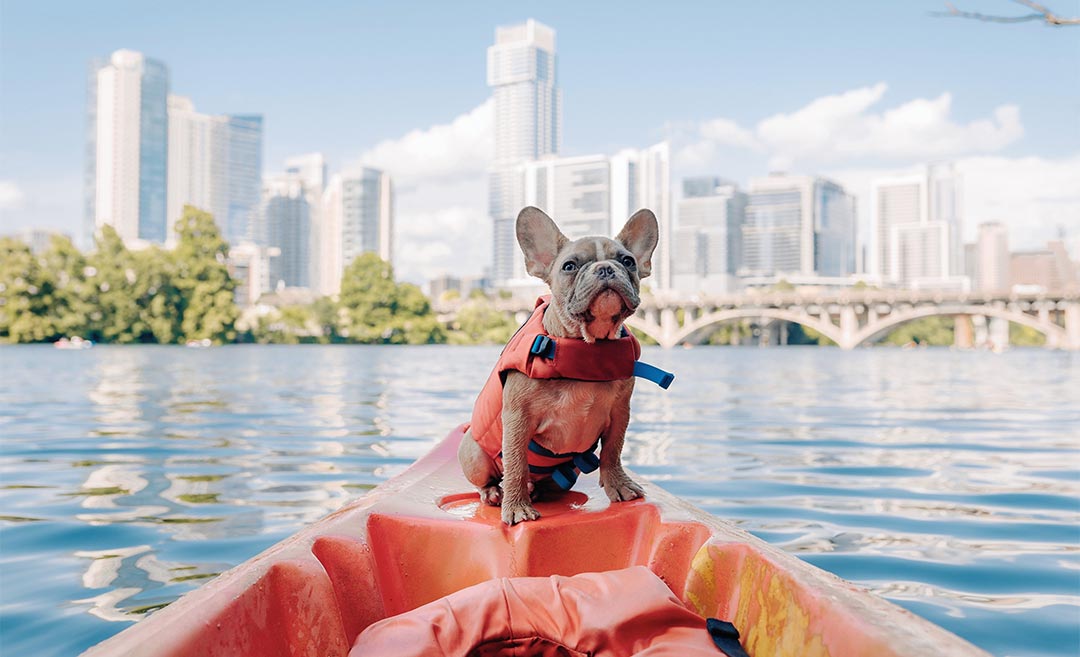Picture this: you’re driving with the windows down, wind sweeping over you, the day seems to last longer, and your breath is slow, steady. You look over and there they are, your best pal right beside you for the ride. There is nothing quite like the joy that comes from experiencing new places with your pets, but learning to travel with a pet takes some work. Fret not, here are a few training tips so your furry friends become your travel companions!
*This article mainly serves cat and dog owners.
1. Build trust & stability through routine

Pets need stability in order to feel safe. When there is a healthy routine at home, it is easier to apply that when you travel with your pet. Have a consistent feeding schedule, daily playtime or walks, and a sleep routine that suits both you and your pets’ needs and lifestyle. Along with a routine, create positive associations with their bed, toys, and snacks so when there is a change of environment they can rely on these consistencies and familiar items to feel safe.
2. Carrier, seat belt & harness training
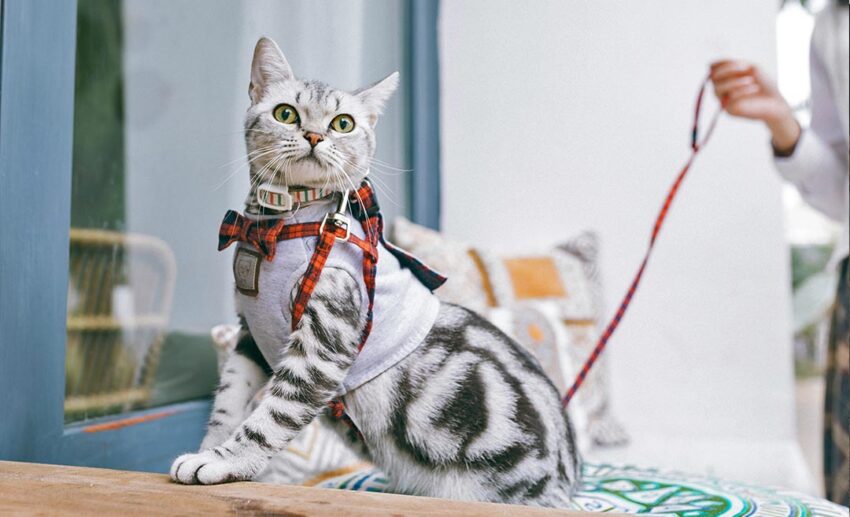
Familiarise your pets with travel items like their carrier, seat belts, and harnesses. Start them as early as possible, as these are items they will be using often. Start with short practicesessions daily using the harness and sitting in their carriers, and reward them with a treat or cuddle when they get it right.
If they are finding it hard, pause and try again later. Don’t pressure, force or punish them if there is little to no progress. This creates negative associations with the carrier, harness, and leash, making travelling much harder.
Once they’re comfortable with these objects, start bringing them into the car and practice using the pet seat and seat belt. Have water, treats, puppy pads and/or a portable litter box in your car as well. Make these little exercises fun and stop when they are no longer enjoying the training. Pick it up another day. Animals learn through repetition so don’t give up.
3. Socialisation & exposure to different environments
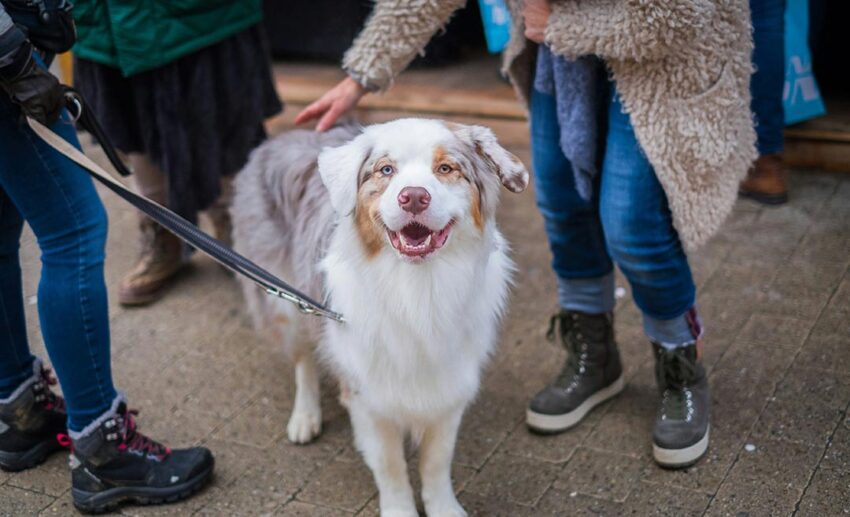
When taking pets outdoors, it’s important to teach them how to behave around other animals, vehicles, and strangers like children, hotel staff, waiters, and more. Playmates help expose your pets to behavioural exercises, so if your family members or friends have pets of their own, it’s good to get them acquainted as young as possible.
Taking them on regular walks at a dog park is another great way to help them socialise.Introduce them to new people and different social settings often. Socialisation not only encourages good behaviour, they ensure your pets mental and physical well-being and teach them to understand safety and boundaries while being outdoors.
4. Start with short road trips
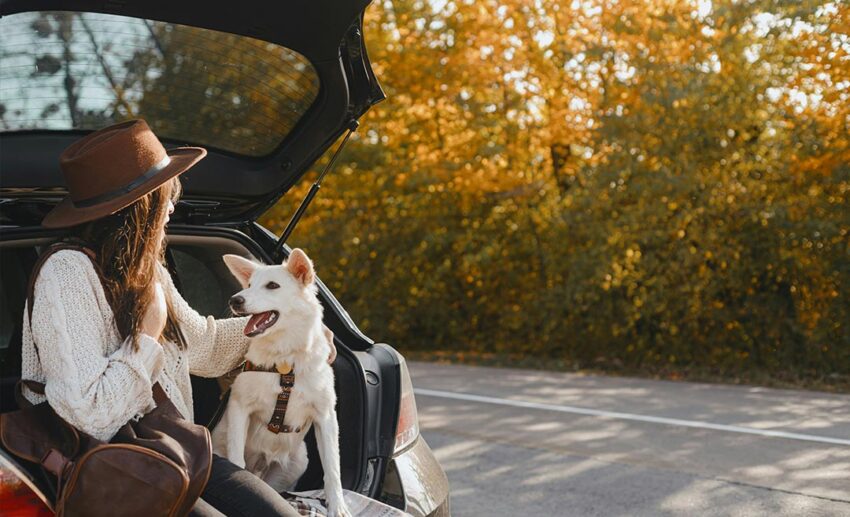
Start with journeys under an hour and gradually increase the time and distance as your pets get more comfortable with travelling. To ensure your pet is relaxed on the journey, exercise, walk, and get them to use the litter box before getting in the car. If your pet is prone to motion sickness, avoid feeding them right before a car journey. Take breaks along the way to let your pet stretch their legs, relieve themselves, and have a snack.
Day trips and weekend getaways are a great way to gradually build your pets’ confidence with being away from home. Never leave your pet in an unattended vehicle and do not leave them at the holiday accommodation alone for long periods of time.
5. Recall training
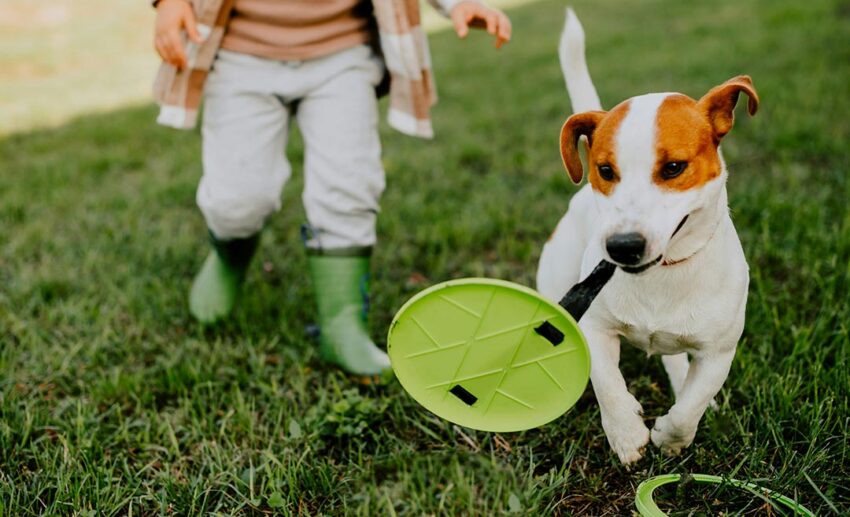
Animals are naturally curious, so it is important to equip them with recall training as young as possible for their safety as well as for the safety of others. Recall training teaches your dog or cat to return to you when you call their name or use cue words like, “Come”, “Here”, “Let’s go”, etc. Keep the recall words short and clear.
Start by practising in a safe enclosed space with your pet on a short lead. Use your verbal cue of choice and ask them to come to you. Each time they do it, reward them with praise (eg. “Good boy”, “Well done”, “Yes”) and a small treat. Practice this several times before moving on to a long lead. When your pet begins to recognise the cue word, practice in an open space on lead, still rewarding with a treat each time they return to you. Gradually work your way to recalling them off the lead and slowly phase out the treats. But always shower them with praise when they return to you.
6. Practice redirection
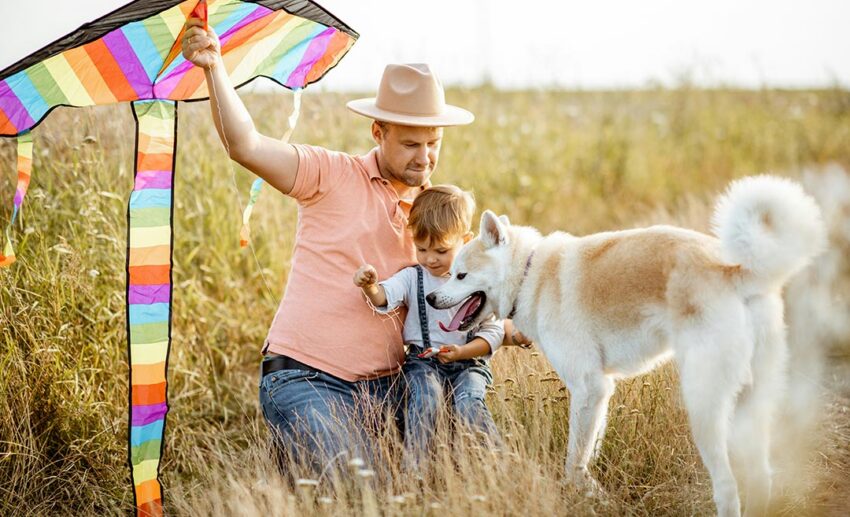
Most pets are easily distracted and triggered by things. Loud sounds, quick movements,scents, and even the weather can cause excitement, fear, or anxiety. As you get to know your pets, take note of what triggers them. If these triggers come with negative behaviours like running off lead, barking, jumping on surfaces, biting, or chasing, you may need to practice redirecting their attention to something else.
You can use their recall training skills here with cue words like, “No”, “Look here”, “Stop”, “Stay”, etc. Once they are no longer fixated on the distraction and are calm, give them a treat to encourage good behaviour.
Another way to redirect their attention away from a trigger is by fabricating a distracting environment in your home and training them to ignore each distraction. For example, invite your friends or family to walk by your pet with their trigger (eg. food, a new toy, another pet) and try to get their attention using cue words or by shifting their focus to something fun, positive, and safe. Reward them when they listen to you. Increase the challenge each time and practice redirecting them. The bigger the challenge, the greater their reward should beas well.
7. Give them something to look forward to
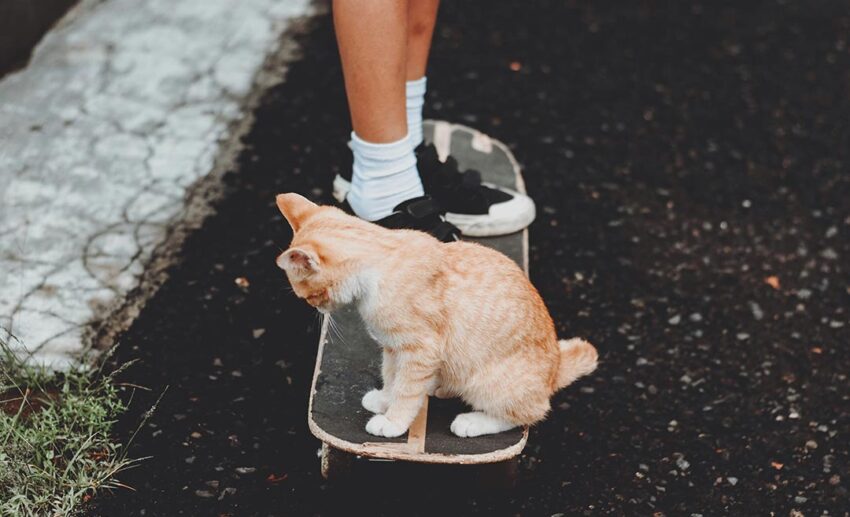
No pet will want to travel with you if all you do is lock them up in a room and leave for hours at a time. Make the trip enjoyable for them too. Incorporating activities, playtime, and giving them more attention will motivate them to join you on your trips. Look for pet-friendly accommodations and destinations that have plenty of space for your pets to run, swim, hike, and play. Bring along their favourite toys and snacks for the road.
8. Patience & understanding go a long way

Some pets will take time to learn how to enjoy trips while others may never like it—and that’s okay. Trust your instincts and trust your pet to show you what they do and do not enjoy. Not all animals are comfortable with changes in their environment and can find it quite stressful. For the pets that love an adventure, plan frequent trips that involve them. If your pet would much rather stay at home and cosy up on their favourite sofa, we suggest snuggling up right next to them.
